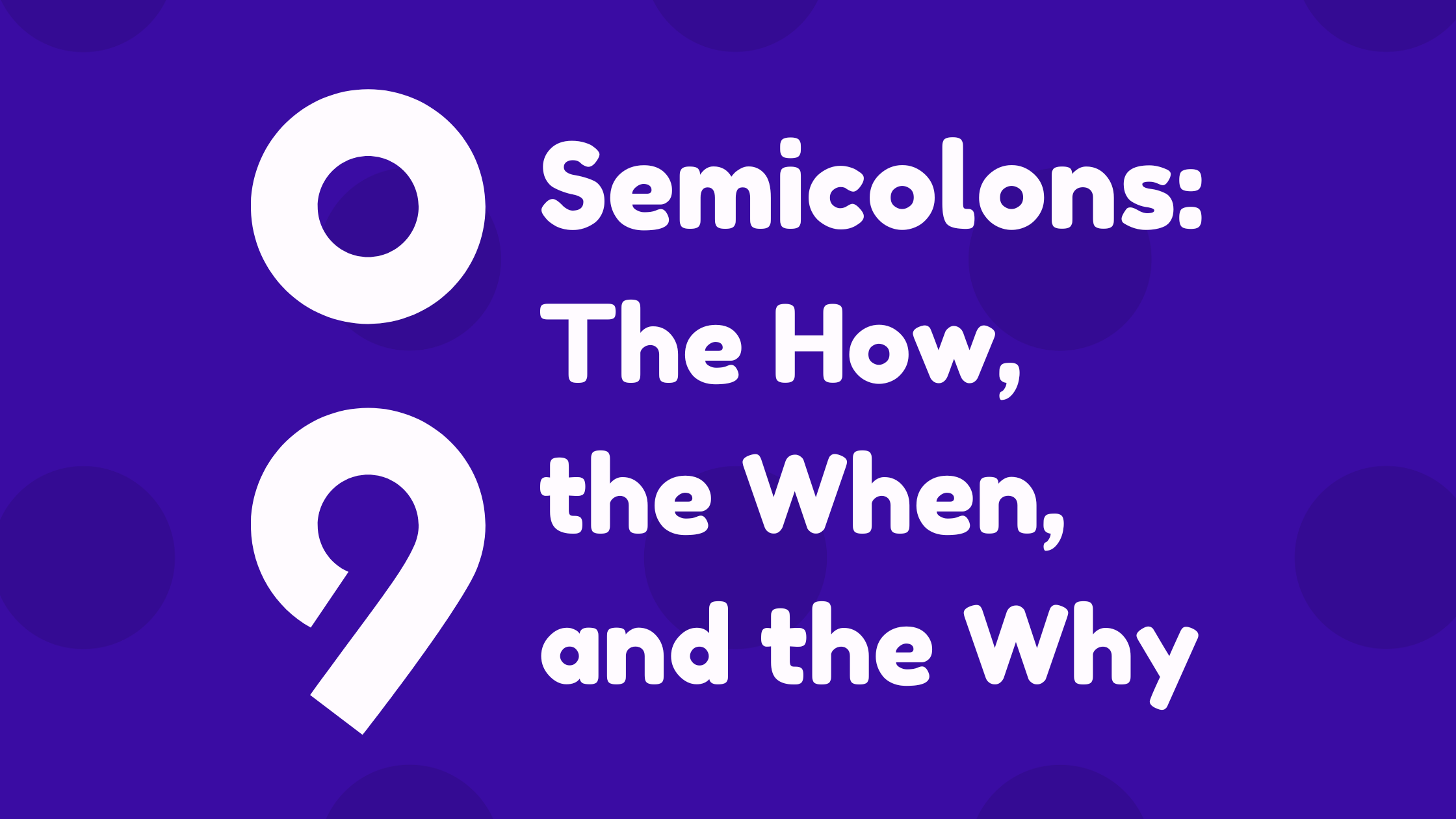Semicolons: How To Use, When To Use, and Why
It has come to my attention that some of you don't know how to use a semicolon. This means that, somewhere, your high school English teacher is shedding a tear. Shame on you!
But enough of that. As a former ACT tutor who had to spend 90% of my lessons teaching high schoolers how to use a semicolon, I feel like I'm qualified to settle this matter, hopefully once and for all.
So read on for the how, the when, and the why of semicolon usage.
In This Article:
How To Use a Semicolon
A semicolon's primary purpose is to join two independent clauses.
Now, what is an independent clause? You ask. Good question. An independent clause is any sentence containing a subject and a verb that can stand alone.
Independent clause: No one understands the poor semicolon.
Dependent clause: "While that's pretty sad..."
The difference between these two sentences is one is a complete thought, while the other needs to be attached to an independent clause to make sense.
If you try to separate two independent clauses with a comma, it's a grammatical error known as a comma splice. So that’s where the semicolon comes in.
Examples of how to use a semicolon:
People hate when I explain semicolons at parties; I don't know why.
The semicolon is so misunderstood; isn't that tragic?
Quick and Dirty Semicolon Rule
If you're like most people and would rather die than think about clauses, independent or otherwise, this is the rule for you.
; = .
That's it. If you can put a period between two sentences, you can replace it with a semicolon.
So when in doubt, cross out the semicolon and use a period instead. Then see if any alarm bells go off.
The Semicolon’s Use in Lists
The other use for a semicolon is a lot more niche: a semicolon can act like a comma if there are a lot of other commas in a list.
So what does that mean? Here's an example.
There are two types of students: those who hate learning punctuation rules; and those, like me, who get weirdly into it.
This is to clear up the confusion that comes with having way too many commas in a sentence.
Note: In this case, my fast and dirty rule above doesn't apply! That's because here, the semicolon is an elevated comma. Luckily, this usage example doesn't come up too much because your sentence is probably too long and complicated if you need to use it.
The Semicolon and Colon
Despite having very similar names, these two punctuation marks generally serve different purposes, with one overlap.
Colons are usually used to introduce something. That thing can be a list, a quote, or a subheading.
So while semicolons are connectors, colons are introductions.
Colon usage examples:
These are some reasons to know colon rules: impress people at parties, win friends and influence people, and make your English teacher proud.
The bard had a famous saying: "Understanding punctuation is the key to a good life." (Don't look that up)
Colons: An In-Depth Analysis
The only overlap that colons and semicolons have is that colons can also join two independent clauses (yes, I know. I don't like it either).
The difference is that you should use colons to join two clauses where one is introducing the other.
Watch out: colons can be tricky.
But the good news is that in this case, you're not going to be wrong either way. It’s just a matter of taste.
When To Use a Semicolon
Now that you know how to use a semicolon let's get into when to use one. Because that's a different matter altogether.
You may have remarked that I have not once used a semicolon outside of an example in this article. That's because semicolons aren't common in web writing or informal writing in general.
When writing content for the web, shorter sentences are better. So it doesn't make sense to use a semicolon 99% of the time. Disappointing, I know.
But in formal writing, or even online writing for a more academic topic, semicolons can help the flow of your writing. For example, it can help to group ideas or introduce a counterargument.
Examples of when to use a semicolon:
Using semicolons online can make you look like a nerd; however, when you need to prove your nerd credentials, the semicolon is always there.
Sometimes a sentence doesn't contain all the information you want it to; that's when a semicolon is ideal.
In Conclusion
The semicolon is a poor and misunderstood punctuation mark; however, that's just because it's so versatile. It's a little bit period, a little bit comma, and a little bit colon; the semicolon can do it all.
If, after all this, you still would prefer never to think about semicolons again, People First Content can step in. Our team of grammar nerds is happy to produce content that will make your brand look fantastic. So call us today to get started, and drop a comment below if you'd like more punctuation guides.
Related Articles



This guide covers key steps to successfully transition to cash only, from evaluating feasibility to securing cash management and training.